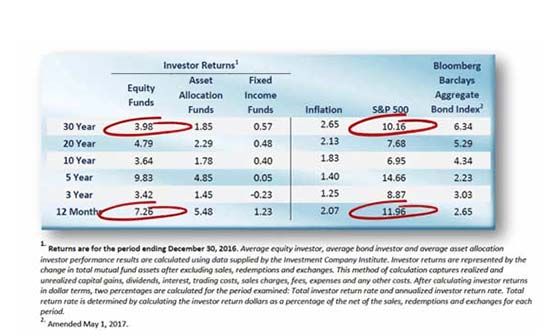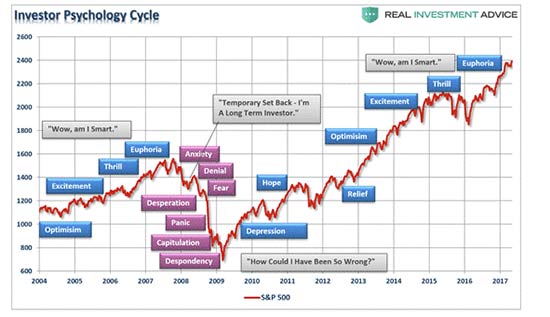Yesterday, we heard that veteran trader and Money Morning's No. 1 stock analyst, Shah Gilani, is swearing off stocks.
They've made him millions over the years, but he's through. And he made a powerful argument for doing so.
Shah's position has all the makings of a movement, really.
Now, his "one-click payout" method, which we saw a little of last night, for making as much as $11,000 a week in the markets is mighty convincing for folks who have doubts about buying stocks right now.
But I've found some cool charts I want to show you that go even further - and prove Shah's more than just "on to something"...
[mmpazkzone name="in-story" network="9794" site="307044" id="137008" type="4"]
Why Pay (and Wait and Worry) for Underwhelming Performance?
Let's get something out of the way up front: All stocks aren't necessarily bad. In fact, the "boring" quality stocks that form the bedrock of a portfolio, the ones you can buy and watch grow for 20 or 30 years, are still a great bet - must-owns, in fact.
But speculating on stocks, trying to catch that one explosive grower...
It's essentially a losing proposition, especially in this day and age.
Look at the times we're living in. Even the cooked "official" inflation rate of 1.9% is nothing to sneeze at, even though, in reality, it runs about 1% higher even than that. Already, off the bat, you're sacrificing 2%.
On top of that, the tax-cut shell game isn't much help, either. It did little if anything to change the capital gains structure or put off the taxman. You're still losing out to taxes.
And if you're dabbling in indexing, one of the so-called "passive" strategies, which up until markets tanked in February were sold as the ultimate retirement "silver bullet" to spending your golden years at ease... you've likely been severely disappointed.
So if you're looking to stocks to beat inflation, the taxman, and maybe even the Grim Reaper, you're outta luck, as this chart from DALBAR shows:

Investor returns were, on average, 6.18% lower than the S&P 500 index for 30-year returns.
That's a significant number, even if you had even just $100 invested; an even more significant number, though, is the 3.98% average investor returns over that period.
Data reported in mid-2017 said that around 54% of Americans were in the stock market; that's roughly 175.88 million investors in America alone. Add in the DALBAR data, and the average investor with even just $1,000 invested in 30 years would be sitting on $1,039.80.
$40 in 30 years? That sound great to you? Me neither.
Turns out, one of the surprising reasons for these ho-hum returns... are investors themselves.
It's More Than Just "All in the Mind"
Look, since January, the stock market essentially hasn't done anything but depreciate 2.25%.
Add in all the volatility, and the market seems to be like walking on a frozen pond when the weather starts to warm up.
Will it break? Or won't it? Do you want to stick around to find out? Me neither.
One of the main reasons individual psychology impacts stockholders so seismically is the sheer amount time that investors hold onto their stocks, and what can happen in that time.
When you have a good chunk of change in the markets, and you see headlines blasting negativity, your mind probably moves directly on over to your own money.
DALBAR classifies nine really charming, totally constructive behaviors that seem to run rampant throughout everyday market activity; they infest, and impact, almost every portfolio on Wall Street: loss-aversion, narrow framing, anchoring, mental accounting, lack of diversification, herding, regret, media response, and optimism.
Now, some of those aren't necessarily negative - like optimism - but the biggest problems arise out of herding and loss-aversion.
Herding will lead to the classic, buy-high-and-sell-low train wreck (because you're just following what everyone else is doing, too little, too late), while loss-aversion usually leads to something akin to panic selling.
Here's a graph of how these emotions have impacted the S&P 500 since 2004. It's not pretty:

You can see it right here, in black and white. It's like I said: The longer investors hold a stock, the more time they have to worry, and the more valuable mental bandwidth that worry takes up. In other words, you could be making better, more profitable moves and decisions... but for this tidal wave of worry about your stocks that's swamping you.
It leads people to buy and sell at almost the exact wrong time - as much as 85% of the time, according to DALBAR - for far too little money.
Turns out, patience may not always be a virtue in the stock market as it is in life.
The easy, elegant solution? Quick, sharp, profitable moves. Setups that could mean gains of 50%, 100%, or even more, in a matter of days or hours. It looks like the only way to beat the indexes, rise above other, fretting investors out there, and put more cold, hard, comfortable cash in your wallet.
That's where Shah's "one-click payout" method comes in - you can get the chance to see how it works right here.
It's good news, the way I see it. You don't have to wait 30 years - of sleepless nights - for a 3% return. You don't have to worry about crazy investors sending markets for volatile loops. You don't have to place bets on stocks - which, in light of all this, seems to be one of the worst moves you could make right now.
That's why I think Shah's "stock boycott" is going to have legs. It's what investors all over the world have been waiting for.
Up Next: Learn More About This Shocking Boycott
After swearing off "zero-gain" stocks, Shah and his team of experts went looking for an entirely new way to make money in the markets. The end result: "one-click payouts," with the potential to generate thousands of dollars each week, all without having to deal with a single, disappointing stock. Click here for details...


